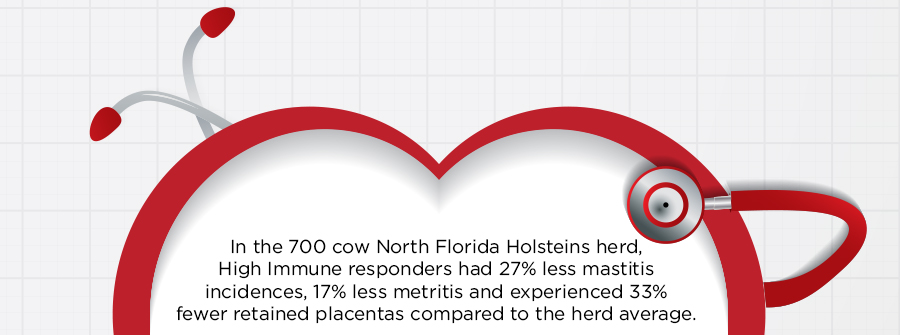High Immune Response – A Year in Review
It has been a full year since Semex launched the Immunity+ brand, a product of the High Immune Response (HIR) research that Dr. Bonnie Mallard developed with her University of Guelph colleagues. Since then, Bonnie has been called upon at numerous conferences to explain her work. Of course, there are people who doubt its significance too, but it is fair to say the vast majority of the dairy industry has embraced the concept and are eager to incorporate HIR genetics into their own herds via Immunity+ sires.

A testament to the popularity of Immunity+ is the fact that fully 50% of the Genomax product WestGen sold last year is from Immunity+ sires. Bulls like Numero Uno, Doorman, Brekem, Bookkeeper, Deductive, Unix are leading the charge – all sires rated at least +3000 LPI and +14 Type. No wonder producers choose Immunity+ then. The arrival of proven sire Impression and the re-emergence of second crop success story and top ranked type sire, Seaver increases usage on the proven sire front as well.
Just as one can choose to select sires that improve upon Production or Type traits and expect to make significant progress within a few generations, so too for Immune Response. That’s because the heritability for the trait is sufficiently high enough that much of the difference observed between animals can be attributed to genetics. While genetic progress for many disease incidence traits, fertility or longevity is hampered by their low heritability, selecting for Immune Response generates results that can be measured more quickly. For example in the 700 cow North Florida Holsteins herd high immune responders had 27% less mastitis incidences, 17% less metritis and 33% less retained placentas compared to the herd average. High Immune response animals respond much better to vaccines and they produce better quality colostrum as well. These are facts. They have led to the economic calculation of an extra $124 of profit per year for High Immune cows compared against the herd average.
We are very early into recording actual herd event information on large scale dairies where Immunity+ sires have been used. Still, even at this early date there is considerable evidence that daughters of Immunity+ sires (as opposed to females that had been tested to be High Immune Responders) as a group perform better on a variety of diseases. For example on one US dairy, 160 daughters of Immunity+ sires experienced a 6.8% incidence rate of Pnemonia while 1107 herdmates experienced pneumonia at an incidence rate of 9.1%. While the difference looks to be relatively small, it is actually a 25% reduction in real terms – in one generation! Even more dramatic, in another large herd, 34 daughters of Immunity+ sires experienced an 8.8% incidence rate for mastitis in 1st lactation compared to 15.8% for their 632 first lactation peers. More such data will be available as the year progresses, but the result is already increased confidence in the High Immune Response science.
The next steps include the development of a process to allow producers a means by which to test females. The thinking is that similar to genomic testing, HIR testing could lead to the development of different breeding strategies within the pool of replacement females. If tail hair collection becomes part of the testing protocol too, then eventually when sufficient animals have been tested the hope is that a genomic test could become available for commercial use which would be easier and less costly.
In the meantime, Immunity+ sires continue to gain in popularity. The industry as a whole has recognized how significant the HIR science is. At the 2013 World Dairy Expo, Semex was the recipient of a top 10 Innovative Product of the Year award from Dairy Herd Management. No doubt with its widespread acceptance and use, dairy farmers in western Canada will soon be able to judge for themselves the value of Immunity+ sires.




Leave A Comment
You must be logged in to post a comment.